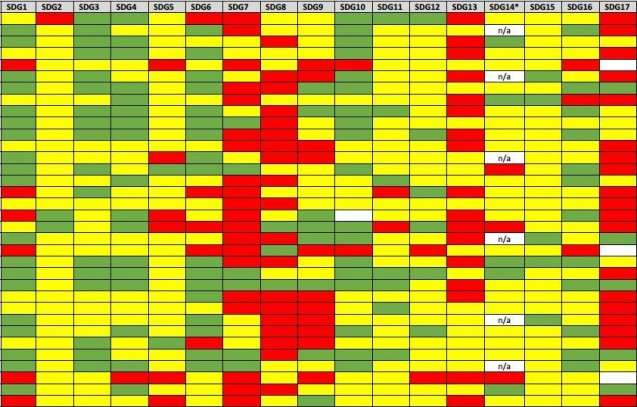The 17 Sustainable Development Goals adopted by all member states of the United Nations in September 2015 set an ambitious global sustainable development agenda. The goals span the three dimensions of sustainable development—economic development, social inclusion and environmental sustainability, underpinned by good governance. In order to operationalize this cross-cutting agenda in the varied contexts of both developed and developing countries, each nation will need to identify the key challenges to prioritize.
Sound metrics and data are critical for turning the Sustainable Development Goals into practical tools for problem-solving. By allowing stakeholders to evaluate the current state of affairs and identify key problem areas, they serve to mobilize actors across government, academia, civil society and business. Better yet, goals indicators can be used both as a management tool and report card to identify priorities for early action, guide the transformations needed to achieve the goals by 2030, track progress and increase accountability.
Recognizing the potential of data to catalyze action, the Sustainable Development Solutions Network, housed at Columbia University, has issued a preliminary SDG Index and Dashboard, now open for public consultation until March 31. Using data available today, the SDG Index ranks countries across the goals in a highly preliminary way, to take stock of the current situation and assess the progress of states relative to their peers.
The SDG Dashboard presents data visually for each country and goal, using green, yellow and red color-coding to highlight each country's most acute challenges. Taken together, these tools highlight that the goals truly are a global agenda: Even countries that rank high on a global level may nonetheless face serious challenges in certain areas, including some not related to environmental performance.
The Sustainable Development Solutions Network is now seeking comments and suggestions on how to improve the draft SDG Index and Dashboard. In collating available datasets, we have identified major data gaps, and would welcome any advice on how to fill them with relevant, globally-available data. In spite of these gaps and other methodological limitations covered in the draft paper, we believe the SDG Index and SDG Dashboard can be used as a first step for countries to assess their starting point on the Sustainable Development Goals. We hope they will foster discussion and further research on Sustainable Development Goal priorities.
Provided by Columbia University






















